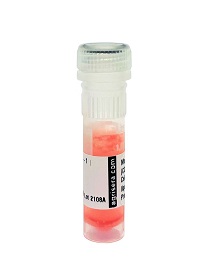1

Anti-Arabinogalactan-protein, AGP (monoclonal, clone LM2)
From the laboratory of Paul Knox, Phd, University of Leeds, United Kingdom
- Product Info
-
Immunogen: Polysaccharide Arabinogalactan-protein (AGP) from Oryza sativa Sub class: IgM Host: Rat Clonality: Monoclonal Purity: Cell culture supernatant. Format: Liquid Quantity: 1 ml Storage: Store at +4°C (short term) and at -20°C (long term). Tested applications: ELISA (ELISA), Immuniflourescence (IF) Recommended dilution: 1:10 (ELISA, IF) - Reactivity
-
Confirmed reactivity: Higher plants, ferns and mosses Not reactive in: No confirmed exceptions from predicted reactivity are currently known - Additional Information
-
Additional information: Contains 0.05% Sodium Azide.
This antibody is made to rice arabinogalactan-proteins (AGPs) and it recognizes a carbohydrate epitope containing B-linked glucuronic acid.
In competitive inhibition ELISAs antibody binding to gum arabic was inhibited (50%) by 70 mg/ml 1-O-methyl-B-D-GlcA. The binding of the antibody to AGPs can be fully inhibited by 10 mM 1-O-methyl-B-D-GlcA.Additional information (application): Antibody is recognizing carbohydrate epitope containing Β-linked glucuronic acid. - Background
-
Background: The plant cell wall surrounds the plant cell as a complex network of polysaccharides classed as: cellulose, hemicelluloses and pectic polysaccharides and glycoproteins. Anchored to or embedded into plant cell wall are other polymers, like: lignin, suberin or cutin. Arabinogalactans can be found in plants as free glycans, or attached to rhamnogalacturonan-I or protein backbones. - Product Citations
-
Selected references: Stacey et al. (1990). Patterns of expression of the JIM4 arabinogalactan-protein epitope in cell cultures and during somatic embryogenesis in Daucus carota L Planta. 1990 Jan;180(2):285-92.doi: 10.1007/BF00194009.
Knox et al.(1991). Developmentally regulated epitopes of cell surface arabinogalactan proteins and their relation to root tissue pattern formation. Plant J. 1991 ov;1(3):317-326.doi: 10.1046/j.1365-313X.1991.t01-9-00999.x. - Protocols
- Immunofluorsecence as described in: Developmental complexity of arabinan polysaccharides and their processing in plant cell walls Verhertbruggen Y, Marcus SE, Haeger A, Verhoef R, Schols HA, McCleary BV, McKee L, Gilbert HJ, Knox JP., The Plant Journal (2009) 59, 413–425.
- Reviews:
-
This product doesn't have any reviews.
